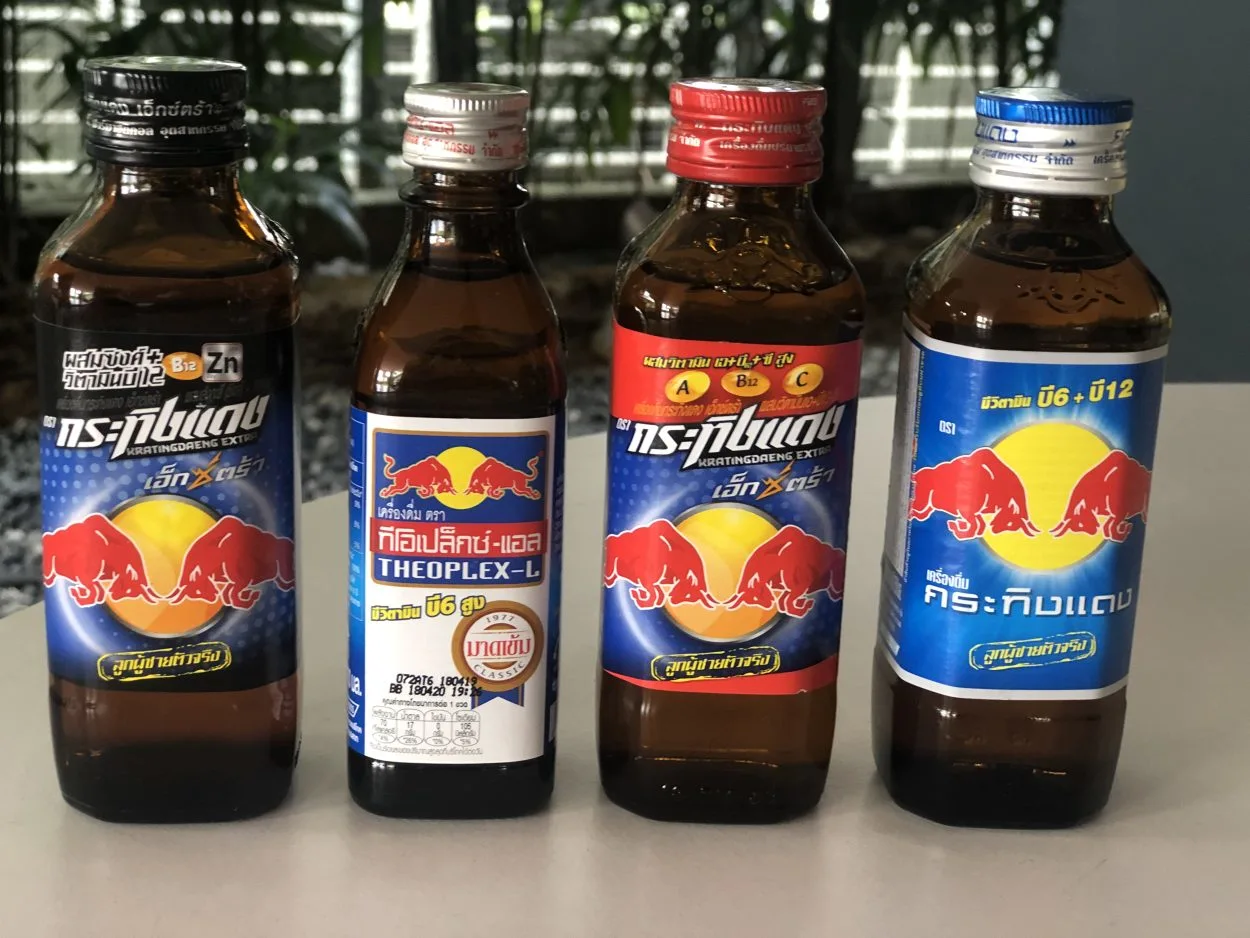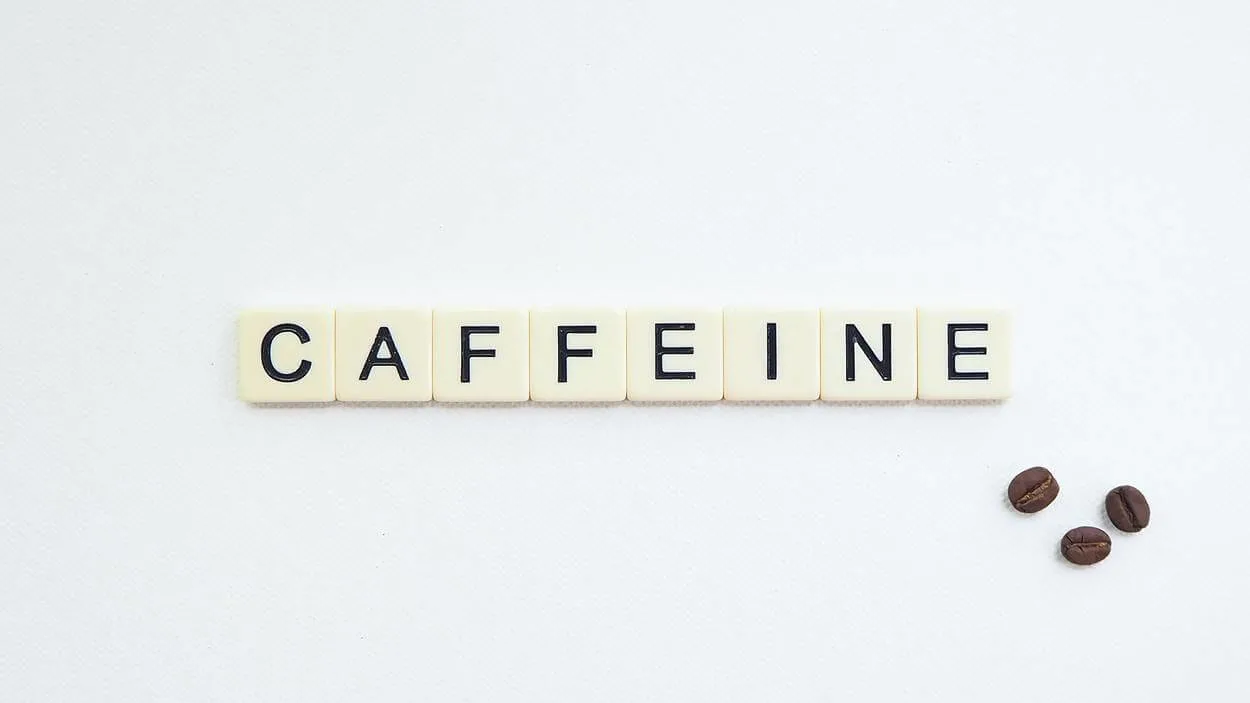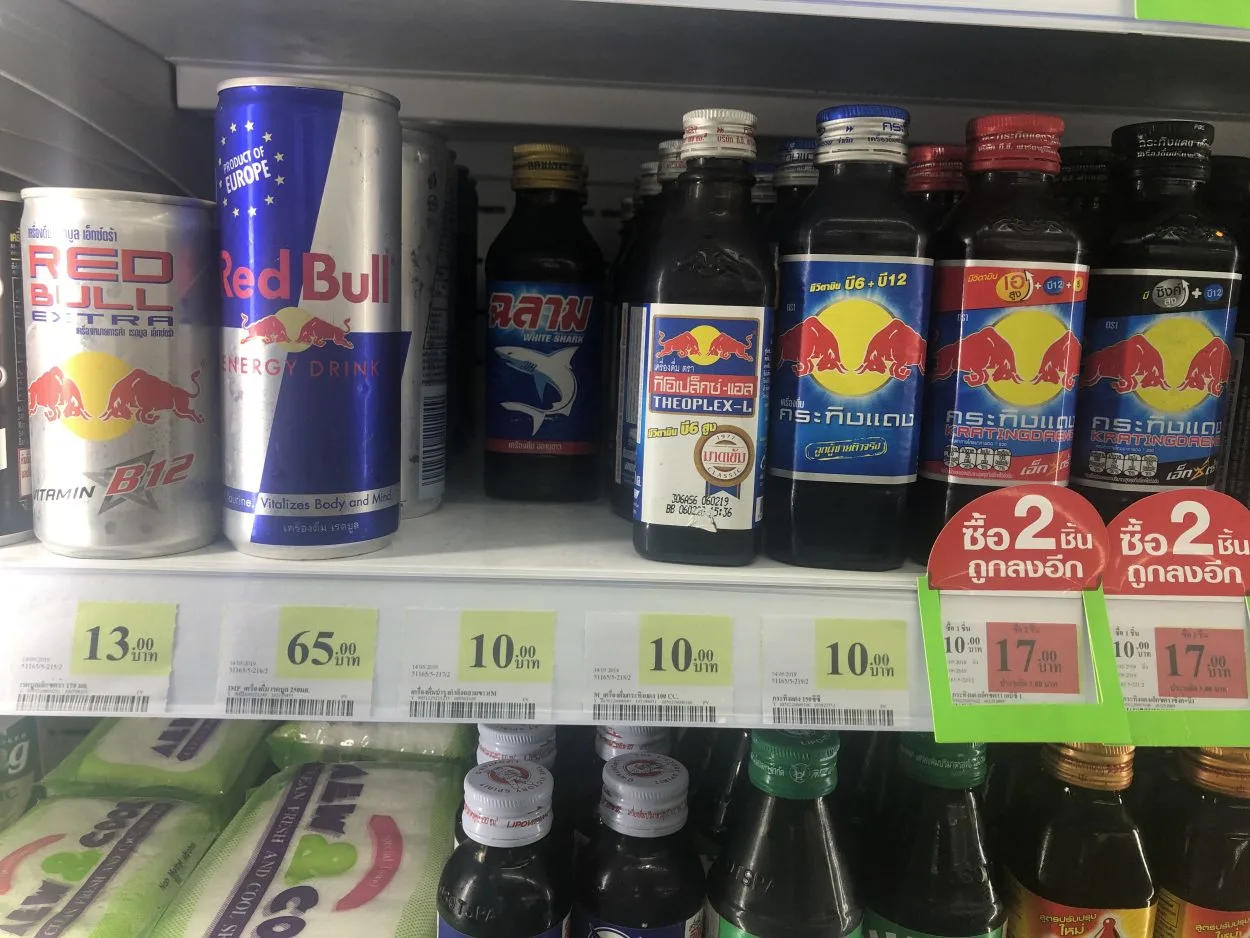While you may know the popular name Red Bull energy drink, did you know that it was inspired by Krating Daeng, a local drink from Thailand?
Krating Daeng was created by Chaleo Yoovidhya, it’s a sweetened and non-carbonated energy drink. The drink is traded in Southeast Asia, East Asia, and 165 other countries. The Krating Daeng logo supports its branding, with 2 charging bulls defining power. The red represents perseverance, and the backdrop of the sun expresses energy.
It has 120 calories, 50mg of caffeine, and 25.7g of sugar per 5 ounces. Furthermore, it’s packed with nutrients like sodium, Vitamin B2, B3, B5, B6, and B12.
Krating Daeng became the basis for the development of the best-selling energy drink globally, Red Bull.
For more details, read further below.
Page Contents
Krating Daeng Nutrition Facts

Let’s have a look at the nutrition facts of Krating Daeng:
| Value (Standard Serving) | Krating Daeng (150ml/5 fl.oz) |
| Energy | 120 calories |
| Protein | <1g |
| Fat | 0g |
| Carbohydrates (Of which Sugars) | 28 g (25.7 g) |
| Sodium | 160 mg |
| Caffeine | 50 mg |
| Choline | 10.5 mg |
| Inositol | 30 mg |
| Vitamin B2 (Riboflavin) | 0.7 mg |
| Vitamin B3 (Niacin) | 21.5 mg |
| Vitamin B5 (Pantothenic Acid) | 5.6 mg |
| Vitamin B6 | 3.5 mg |
| Vitamin B12 | 7.5μg |
Krating Daeng Ingredients
Below are listed the ingredients of Krating Daeng:
- Sucrose
- Taurine
- Caffeine
- Choline
- Inositol
- Pantothenic Acid (Vitamin B5)
- Vitamin B6
- Vitamin B12
- Acid Regulators (INS 330)
- Preservative (NS 21)
- Synthetic Color and Flavorings
Krating Daeng Ingredient Analysis
Sucrose
Sucrose is the scientific name for table sugar, and it is naturally produced in plants. Sucrose is present in many foods like fast foods, beverages, puddings, and milkshakes.
Taurine
Taurine is also known as amino sulfonic acid. It’s naturally found in the human body such as the brain, retina blood cells, and heart. In the food category, it’s found in meat, eggs, and fish.
Caffeine
Caffeine is a central nervous system stimulant, generally found in tea, cocoa plants, and coffee. It helps you to stay alert and active. It’s also the most used drug globally.
Choline
Choline is an essential nutrient for humans, and it’s made in the liver and also found in foods, for instance: as nuts, vegetables, eggs, beans, meat, and fish. It helps to regulate, mood, memory, and some other functions.
Inositol
Inositol is a carbohydrate, found naturally in the human body and in some foods. It improves some anxiety disorders, increases memory function, and also deals with insulin sensitivity.
Pantothenic acid
Pantothenic acid also named Vitamin B5, is naturally found in foods and it’s an important nutrient. It’s beneficial for the skin, works as a moisturizer on the skin, and helps heal wounds.
Vitamin B6
Vitamin B6 is essential for keeping the nervous system, and immune system healthy and for normal brain development. It’s found in pork, poultry, banana, soya beans, some fish, and peanuts.
Vitamin B12
Vitamin B12 (cobalamin), is an essential vitamin that keeps the body’s blood and nerve cells healthy. Insufficient vitamin B12 leads to anemia, which makes the body weak.
How Much Caffeine Is Too Much?

As claimed by most experts drinking more than 600 milligrams of caffeine per day is too much for you.
According to Everette, “But if you are sensitive to caffeine, even one or two cups of coffee could cause side effects. Children may be very sensitive to the effects of caffeine. For pregnant women, the safe limit is only 200 milligrams.”
Overdosing on caffeine can lead to side effects such as insomnia, irregular heartbeat, anxiety, and agitation.
What Does Sodium Do To Your Body?
Sodium is both an electrolyte and mineral, and It helps keep the water (the amount of fluid inside and outside the body’s cells) and electrolyte balance of the body.
Sodium is also crucial in how nerves and muscles function. The majority of the sodium in the body (around 85%) is present in blood and lymph fluid.
What are sodium deficiency symptoms?
The symptoms of sodium deficiency are:
- Nausea and vomiting
- Headache
- Confusion
- Loss of energy, drowsiness, and fatigue
- Restlessness and irritability
- Muscle weakness, spasms, or cramps
- Seizures
- Coma
What Is Inositol Used For?
Inositol is a vitamin-like substance, and it is present in numerous plants and animals.
Additionally, It can be developed in a laboratory too. Inositol is served for diabetic nerve pain, panic disorder, high cholesterol, insomnia, cancer, depression, schizophrenia, Alzheimer’s disease, attention deficit-hyperactivity disorder (ADHD), autism, promoting hair growth, a skin disorder called psoriasis, and curing side effects of medical treatment with lithium.
Not only that, Inositol is used by the mouth too for curing conditions linked with polycystic ovary syndrome, including failure to ovulate; high blood pressure; high triglycerides; and high levels of testosterone.
Krating Daeng Calorie Content
5 fl. oz each serving of Krating Daeng provides you with nearly 120 calories, which is a considerable amount of calories considering the bottle size.
As you only require about 2000 to 2500 calories daily, a single serving of Krating Daeng provides your body energy without being immoderate.
Krating Daeng is a quick booster, be sure not to consume too many Krating drinks. Excessive consumption leads to:
- Anxiety
- Insomnia
- Restlessness
- Headaches
- Stomach pain
- Dizziness
- Dehydration
Krating Daeng Sugar Content
Krating Daeng contains a reasonable content of sugar. 5 fl. oz bottle of Krating Daeng has 28g of sugar.
According to AHA, daily sugar consumption should not be more than 24g or 6 teaspoons for women and 36g or 9 teaspoons for men.
You might face notable issues if you consume sugar limitlessly:
- Weight Gain
- Type II Diabetes
- Risk of heart disease
- Acne
- Risk of depression
Is Krating Daeng Bad For You?
If you’re not replacing your liquid consumption with Krating Daeng, then it’s not bad for you. You can have 1 serving of Krating Daeng every day.
Krating Daeng has lower values of caffeine than a cup of coffee (50mg per 5 ounces). So, Krating Daeng isn’t bad for you as long as you’re consuming it in moderation.
Krating Daeng is dangerous if you have pre-existing health condition or sickness. The most dangerous ingredients present in Krating Daeng are sugar and caffeine.
When you take more than sufficient quantities of Krating Daeng in a single stroke, the risks pile up. This can push your body to play a dangerous game from apparent caffeine intoxication-which can give a rise to your heart rate to grow fast, spike blood pressure, spread tremors, and symptoms of a stroke. All the above can be terrible.
Krating Daeng VS Red Bull
Krating Daeng and Red Bull are fairly close to each other.
| Krating Daeng (5fl.oz) | Red Bull (8.4fl.oz) | Max Daily Limits (Female/Male) | |
| Calories | 120 calories | 110 calories | 2000/2500 calories |
| Caffeine | 50 mg | 80 mg | 400 mg |
| Sugar | 25.7g | 27g | 25g/36g |
By looking at this table we can say that Krating Daeng has more calories and sugar per ounce compared to Red Bull. There isn’t much difference in the caffeine content of both beverages.

Krating Daeng Alternatives
There are some other energy drinks you can try:
Bottom Line
Krating Daeng was first formed in 1975, and it was presented in Thailand in 1976. It has water, caffeine, taurine, cane sugar inositol, and B-vitamins.
Krating Daeng gives you a thrust of power, to keep you active and alert. It reduces fatigue and enhances memory and other brain function.
Eventually, moderation is the key. You should always drink Krating Daeng or any other energy drink within limits.
You can watch the following video for Krating Daeng reviews:
